As the motoring world is gradually shifting toward electric propulsion, Kawasaki is putting a new spin on internal combustion with its hydrogen-fueled motorcycle based on the supercharged Ninja H2 – yep, an H2 powered by H2!
Most hydrogen-fueled cars on the market or in development use the compressed gas in a fuel cell that produces electricity, which then feeds an electric motor for propulsion. But this new Kawi internally combusts hydrogen like gasoline-fueled engines.
This groundbreaking machine was paraded a few days ago in front of the audience at the Suzuka 8 Hours FIM World Endurance race. It marked the world’s first public demonstration run of a hydrogen ICE (internal combustion engine) motorcycle, at least one created by a mass-production manufacturer.
“Hydrogen engines produce power like conventional gasoline engines,” said the bike’s project leader, Satoaki Ichi. “Hydrogen burns more quickly and under a wider range of conditions than gasoline, making it possible to create a more responsive feeling than ever.”
Kawasaki began development of this bike in March 2023, using the supercharged 998cc inline-Four found in Kawasaki’s Ninja H2 but with modifications to allow direct injection of hydrogen fuel into the cylinders. It operates on hydrogen combustion, so it retains familiar internal-combustion sensations when twisting the throttle, as you’ll hear when viewing the video above.
Related: Kawasaki Ninja H2 SX SE Review
The results of hydrogen’s combustion are water vapor and virtually no carbon dioxide, making this system largely carbon-neutral. Kawasaki Motors Ltd., a member of the Kawasaki Heavy Industries Group, is conducting R&D with the aim of producing a hydrogen ICE motorcycle in the early 2030s.
Kawasaki is a member of HySE (Hydrogen Small-mobility & Engine technology), an association focused on researching hydrogen-combustion technology, from engines to filling and fuel-supply systems. The membership includes the Japanese Big Four motorcycle companies and Toyota.
Using hydrogen for fuel has clear advantages in terms of exhaust emissions, but its widespread adoption will be hindered by the extremely limited infrastructure for its delivery into motor vehicles. Hydrogen’s transportation and storage require special facilities that are expensive to set up.
“Timing and availability,” notes Kawasaki, “may vary depending on the hydrogen fuel supply infrastructure and the status of legal regulations in each country.”
Kawasaki is clearly committed to alternatives to traditional gas-powered internal-combustion engines. In 2023, Kawasaki announced two all-electric motorcycles, the Ninja e-1 ABS and Z e-1 ABS. And in January, Kawasaki unveiled two hybrid motorcycles, the Ninja 7 Hybrid ABS and Z7 Hybrid ABS, which combine an internal-combustion engine with an electric motor, and they can run on either power source independently or on both at the same time.

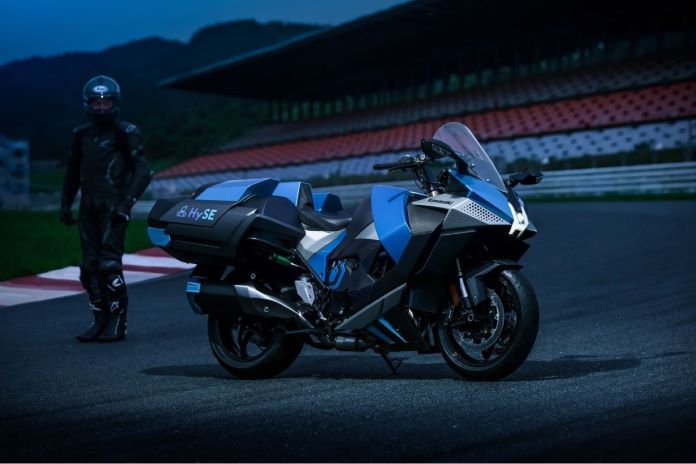
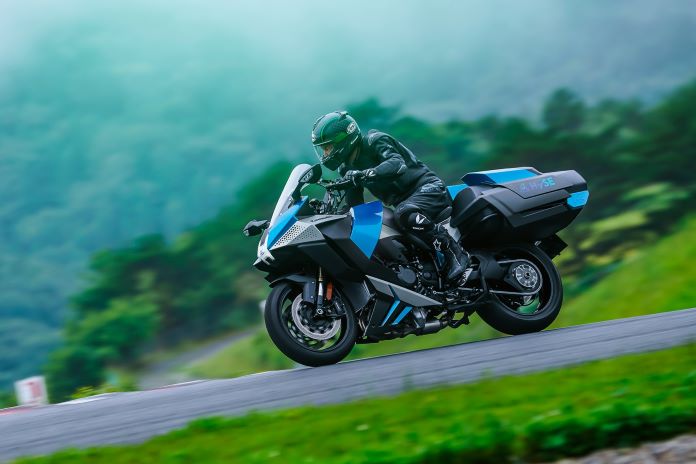
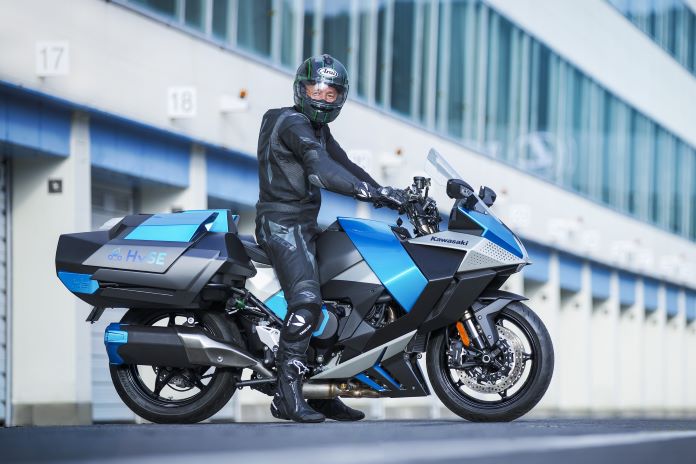
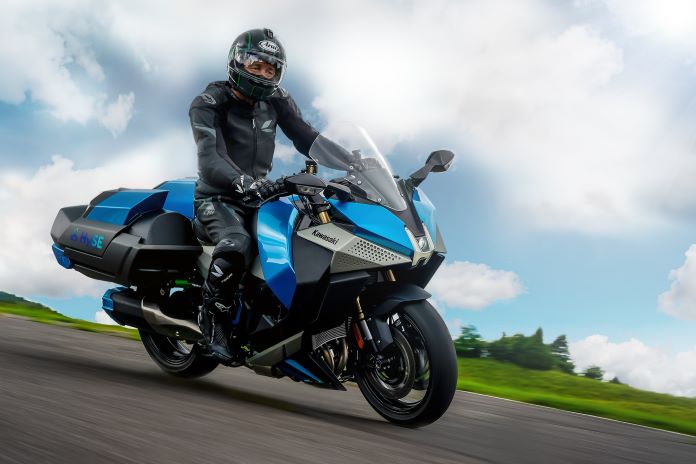
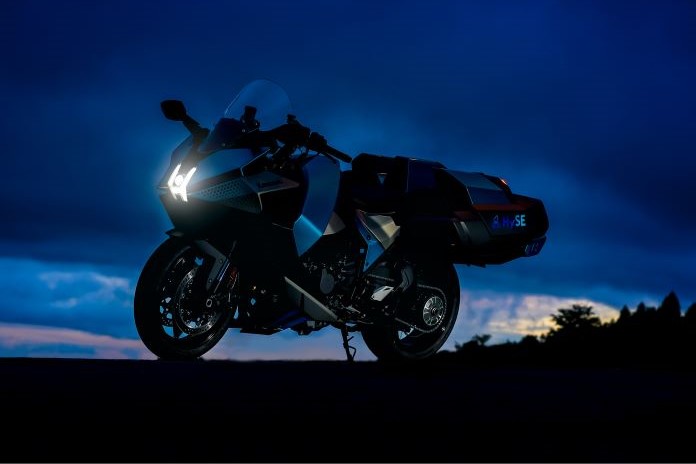

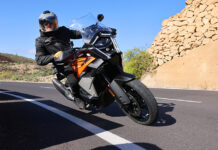
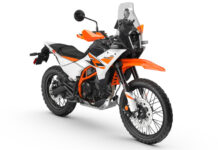
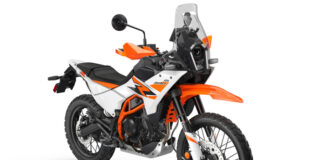
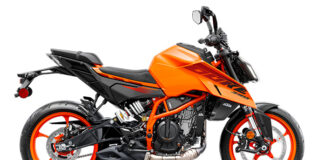


A move in the right direction
What a great idea. Saving the planet. Gee, if every motorcycle in the world converted to hydrogen, the could be 1/10,000 th of a degree cooler by the end of the next century. But wait, doesn’t it take more energy to separate the hydrogen from the oxygen in water than it produces burning it? Oh, no problem. We can extract hydrogen from hydrocarbons. Of course that release more co2 than burning the hydrocarbons. Oh well. Maybe the whole thing is a pretty stupid idea, but, it’s virtue signaling, so it’s worth it.
Absolutely spot on.
A waste of time.
Article is shallow and skips:how much range would it have compared to gas and electric….what is the cost per mile at this time based on the Hydrogen pump prices now in California…what safety issues could they be….how much does it weigh….
We’ve been following Kawasaki’s developement but all we read is a sells pitch…how about some real world facts for riders?
I do understand the intention, but I would rather walk than right this monstrosity. Technology is awesome and environmentally friendly. But holy mother of God is that ever an ugly motorcycle
Awesome. I see this as a much better solution that using batteries.
The problem with all hydrogen vehicles is the method for producing the hydrogen. If we used current power plants to produce the electricity need to extract the hydrogen, we would probably increase the carbon released to the atmosphere. The only alternative now is to produce that energy using nuclear power. However, with nuclear power being reduced in this country, that isn’t likely.
In order to make hydrogen work, we will need to rethink power in a holistically way. Do you think the people trying to remove CO2 are going to be able to get the whole thing working? I doubt it.
I’ve been following the research into using hydrogen as an automotive fuel since the ’60’s.
The biggest problem with hydrogen isn’t how it’s made (though that is a big problem.) The biggest problem is hydrogen’s energy density. Even stored in your motorcycle in extremely high pressure cylinders, the vehicle’s range is going to be terrible. It’s simple physics. Unlike the headroom for developing better batteries, there is no foreseeable path for creating a way to store more hydrogen in a small space.
It gets worse. Those huge saddlebags on the Kawasaki prototype that you see? They have very heavy, pressurized cylinders in the worst possible place for handling on a motorcycle. High up and very far back. That unloads the front wheel, which you really really don’t want. I don’t see those being able to be moved anywhere better. There is nowhere else with the space to put them.
Using hydrogen just isn’t practical on a motorcycle. Though it is impressive that this prototype nominally is able to work. It’s not a accident that there will be no third pary road tests of this bike, and Kawasaki is not giving out specs like weight, range, etc.